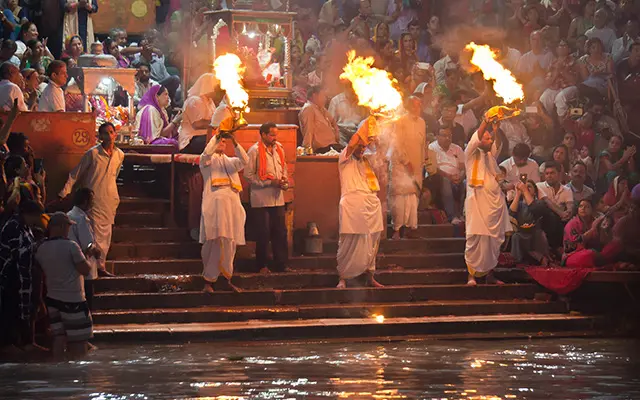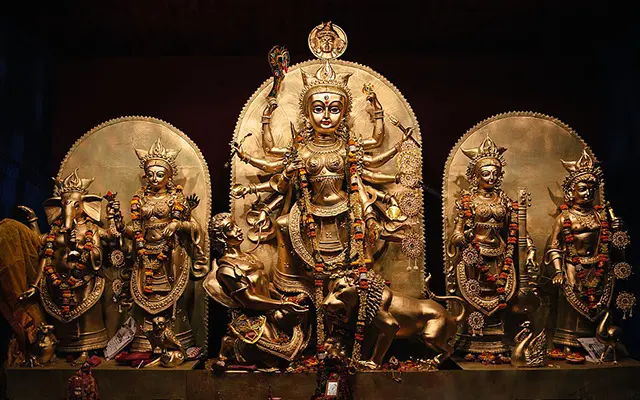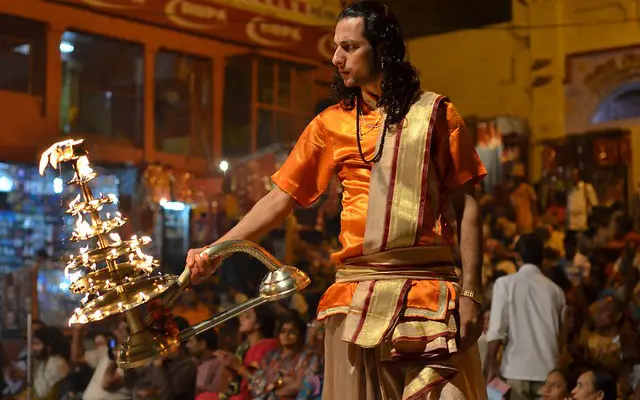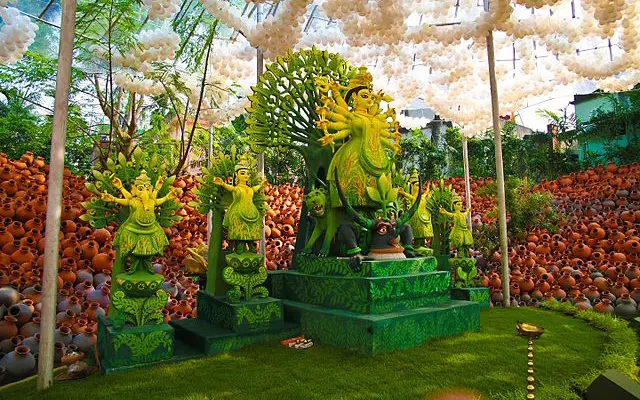How is Navratri celebrated in different parts of India?
Find out how India celebrates the popular Navratri festival in the Northern, Western, Southern and Eastern parts of the country.
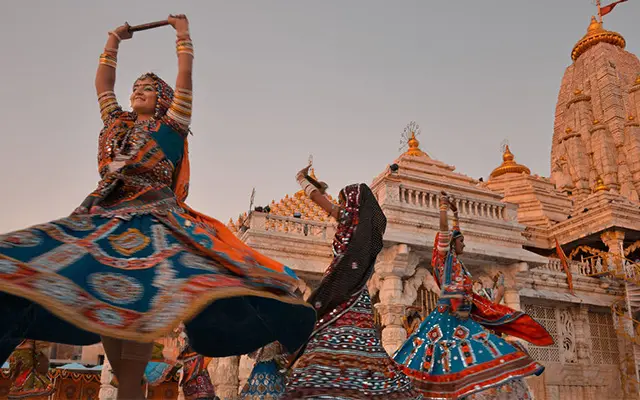
Experience the festival in different regions
India is huge! The same applies to the diversification of the Navratri customs, the rituals and the ways of worshiping during the different regions of the country.
Navratri festival illustrates an ultimate celebration of colors, joy, rejuvenation as well as cleanness (mental, physical, spiritual) and diversity. Rituals, food, language, music, cultural approach, and clothing varies depending on the part of the country or the city someone chooses to visit.
North India
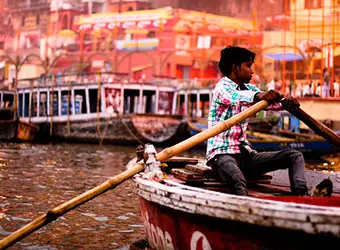
In North India, Navratri is characterized by the religious devotion expressed by nine days of fasting and worship to the Goddess Durga in all her nine forms.
These forms are demonstrated as nine different avatars (Mata Shailputri, Mata Brahmacharini, Mata Chandraghanta, Mata Kushmanda, Maa Skanda Mata, Maa Katyayani, Mata Kalratri, Mata Maha Gauri, and Mata Siddhidatri).
The effigies of King Ravana are burnt in order to celebrate the victory of the good (Lord Rama) over the evil forces. All temples are specially decorated with flowers and ornaments while people are offering gifts (clothes, sweets, etc.) to family members, neighbors, and friends.
Many northern states like Uttar Pradesh are well known for their fairs, folklore music and dance festivities that attract thousands of visitors.
West India
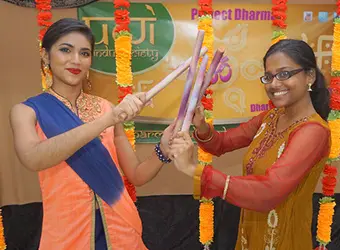
Western India and especially the regions of Gujarat and Mumbai attract probably the biggest numbers of visitors from other parts of the country and abroad too.
The festivities include the famous dances of Garba and Dandiya Raas. Garba, that means womb in Sanskrit, comes originally from the state of Gujarat and is performed with circular and spiral figures around a lit lamp.
The dance around the lamp that represents fetus (life), implies pregnancy and the dancers honor Goddess Durga, the feminine form of divinity. Dandiya Raas that originates from Gujarat is performed by men and women who dance in two circles with sticks in their hands. The dance represents the fight between Goddess Durga and demon Mahishasura while the sticks symbolize the swords of the fight. This is the reason why Dandiya Raas is nicknamed as “the sword dance”.
Apart from the dancing events which are undoubtedly the highlight of the festival people perform complex rituals and pujas honoring Goddess Durga.
South India
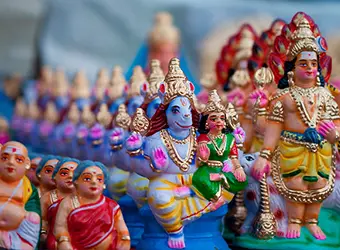
Narvatri in South India is related to another form of artistic expression that is known as the Golu (Kolu) dolls. Those are exhibition displays consisted of various handmade dolls and figurines that mostly have Goddess related themes. They are made by rural artisans who use clay, local material and colorful painting.
Narvatri is a displaying period when families visit each other with gifts and festive goods. Golu displays are arranged also by Hindu temples and this custom is particularly popular in Karnataka, Tamil Nadu, and Andhra Pradesh.
Parallel to that, puja ceremonies like Ayudha Puja are conducted in many parts of the south. During that, people worship appliances which are used in daily life like all kind of tools, household items, machinery, books, and musical instruments. The blessing of the Goddess is considered significant for success and people tend to start new businesses and buy things during the Navratri period.
East India
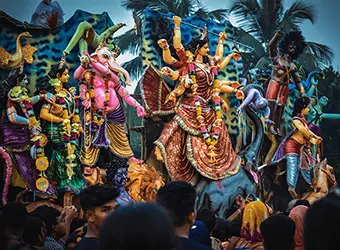
In East India and especially at the Bengali region, fasting is considered as a significant component of Navratri, while worshiping all nine forms of Goddess Durga is also essential.
Puja Pandals, which are permanent (or temporary) Goddess cherishing structures, are organized and big idols of Goddess Durga are placed on them.
Some idols portray the Goddess carrying different weapons and riding a lion, while some others depict her killing the demon Mahishasura. The lion symbolizes the power of will and the articulate the commitment we need to eradicate the negativity in our minds.
Is Navratri the best period to visit India?
In case you are targeting to obtain a genuine experience of the Indian culture and spiritualism, the festival of Navratri is probably the best period to visit India.
Navratri is an identity element for Hindus as well as an extraordinary opportunity for visitors to dive into the cultural and fundamental origins of India. The festival, regardless of the region that is taking place, teaches the benefits of reconnecting and its rituals are the tools that help to achieve this goal.
To other countries, I may go as a tourist, but to India, I come as a pilgrim.
Resting, rejuvenating, understanding ourselves as well as connecting with people and the environment are the significant element that can lead us to celebrate life. Undoubtedly, Navratri is one of the best periods to visit and experience India.
